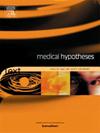东亚人特有的基因多态性醛脱氢酶2 rs671可以解释亚洲婴儿猝死综合征发生率低的原因
IF 2.1
4区 医学
Q3 MEDICINE, RESEARCH & EXPERIMENTAL
引用次数: 0
摘要
醛脱氢酶2 (ALDH2)基因rs671的单核苷酸多态性在东亚人群中具有很高的患病率。先前的研究已经证明了多态性与抗感染的关联。鉴于感染与婴儿猝死综合征(SIDS)具有很强的流行病学、病理学和临床相关性,该多态性对感染的预防作用为东亚婴儿SIDS发病率较低提供了合理的解释,并且是该假说的基础,该假说的演变得到了详细解释。本文章由计算机程序翻译,如有差异,请以英文原文为准。
A genetic polymorphism unique to East Asians, Aldehyde dehydrogenase 2 rs671, could explain the low incidence of Sudden Infant Death Syndrome in Asian babies
The single-nucleotide polymorphism of the aldehyde dehydrogenase 2 (ALDH2) gene, rs671 has a very high prevalence in East Asian populations. Previous studies have demonstrated an association of the polymorphism with protection against infection. Given that infection has very strong epidemiological, pathological and clinical associations with sudden infant death syndrome (SIDS), the preventative effect of the polymorphism against infection provides a plausible explanation for the lower incidence of SIDS in East Asian infants and is the basis of the hypothesis, the evolution of which is explained in detail.
求助全文
通过发布文献求助,成功后即可免费获取论文全文。
去求助
来源期刊

Medical hypotheses
医学-医学:研究与实验
CiteScore
10.60
自引率
2.10%
发文量
167
审稿时长
60 days
期刊介绍:
Medical Hypotheses is a forum for ideas in medicine and related biomedical sciences. It will publish interesting and important theoretical papers that foster the diversity and debate upon which the scientific process thrives. The Aims and Scope of Medical Hypotheses are no different now from what was proposed by the founder of the journal, the late Dr David Horrobin. In his introduction to the first issue of the Journal, he asks ''what sorts of papers will be published in Medical Hypotheses? and goes on to answer ''Medical Hypotheses will publish papers which describe theories, ideas which have a great deal of observational support and some hypotheses where experimental support is yet fragmentary''. (Horrobin DF, 1975 Ideas in Biomedical Science: Reasons for the foundation of Medical Hypotheses. Medical Hypotheses Volume 1, Issue 1, January-February 1975, Pages 1-2.). Medical Hypotheses was therefore launched, and still exists today, to give novel, radical new ideas and speculations in medicine open-minded consideration, opening the field to radical hypotheses which would be rejected by most conventional journals. Papers in Medical Hypotheses take a standard scientific form in terms of style, structure and referencing. The journal therefore constitutes a bridge between cutting-edge theory and the mainstream of medical and scientific communication, which ideas must eventually enter if they are to be critiqued and tested against observations.
 求助内容:
求助内容: 应助结果提醒方式:
应助结果提醒方式:


